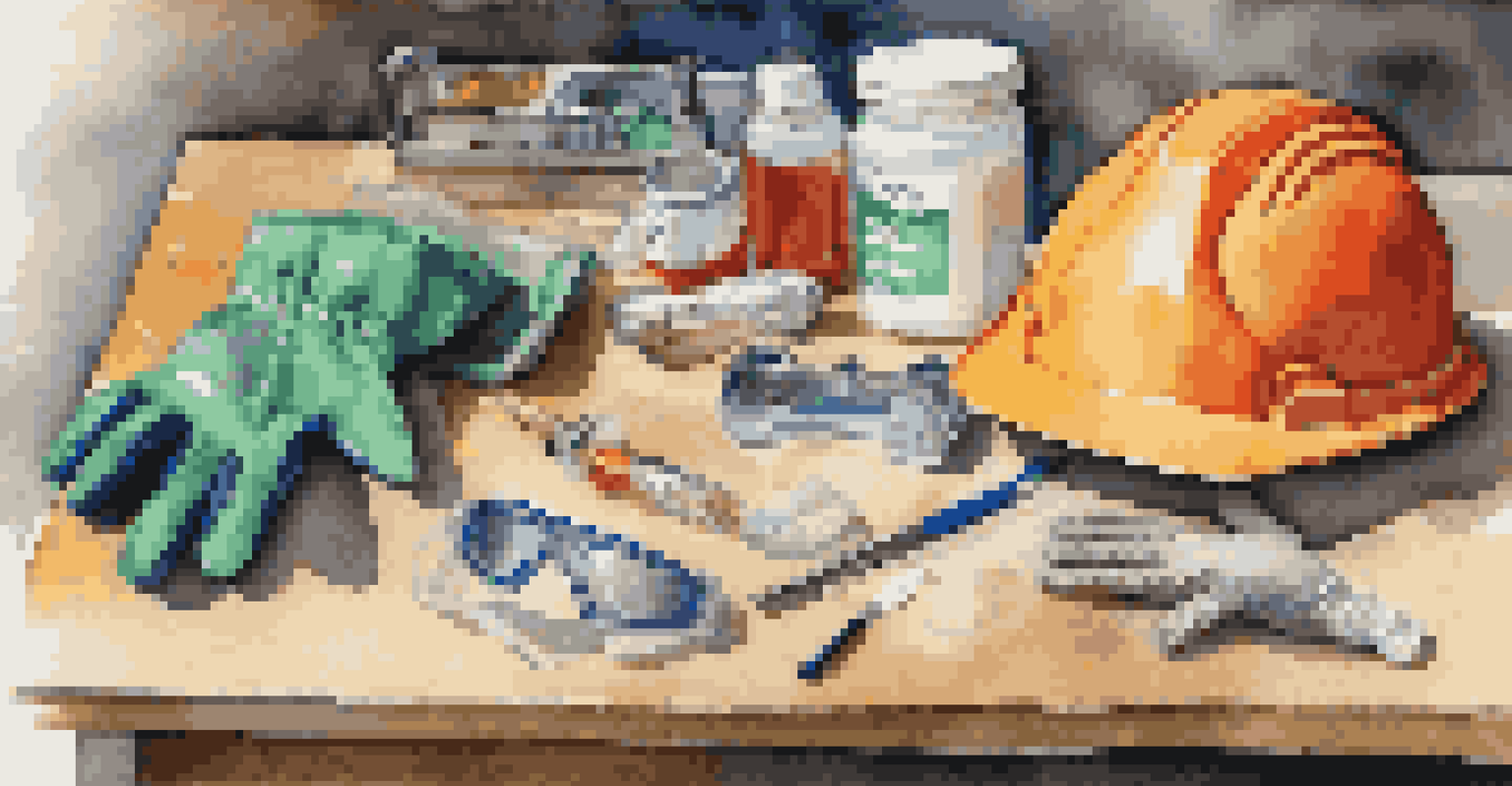How to Implement Safety Protocols for Home Services

Understanding the Importance of Safety Protocols
Safety protocols in home services are crucial for protecting both workers and clients. They help minimize risks associated with various tasks, ensuring everyone involved feels secure. By prioritizing safety, businesses can foster trust and reliability, which are essential for long-term success.
Safety isn't expensive, it's priceless.
Imagine a home repair service showing up without any safety measures in place. It not only puts the workers at risk but also worries the homeowners about potential accidents. Therefore, having well-defined safety protocols acts like a safety net, catching issues before they escalate.
Ultimately, understanding the importance of these protocols is the first step in creating a culture of safety. When everyone on the team values safety, it becomes second nature, leading to smoother operations and happier clients.
Assessing Risks in Home Service Jobs
Before implementing safety protocols, it's essential to assess the specific risks associated with your services. Each task may present unique hazards, from electrical repairs to plumbing work. Conducting a thorough risk assessment helps identify these potential dangers, allowing you to tailor your safety measures accordingly.

For example, if your team regularly handles heavy equipment, you’ll want to focus on physical safety measures, such as proper lifting techniques. Conversely, if you're dealing with chemicals for cleaning, ensuring proper ventilation and protective gear becomes vital. This tailored approach ensures that all bases are covered.
Safety Protocols Build Trust
Implementing safety protocols protects workers and clients, fostering trust and reliability in home services.
By taking the time to evaluate risks, you’re not only protecting your workers but also enhancing the overall quality of your service. Clients will appreciate your proactive approach, knowing that their safety is a priority.
Creating Clear Safety Protocols and Guidelines
Once you've assessed the risks, it's time to create clear and concise safety protocols. These guidelines should be easy to understand and accessible to all team members. Consider using bullet points or checklists to break down complex procedures into manageable steps.
An ounce of prevention is worth a pound of cure.
For instance, if you're implementing a protocol for ladder safety, include specific guidelines like maintaining three points of contact and not overreaching. This clarity helps workers quickly recall the necessary steps while on the job, reducing the likelihood of accidents.
Remember, a well-structured guideline document not only serves as a reference but also reinforces the importance of safety in everyday tasks. Consistency in these protocols fosters a culture of safety that becomes ingrained in your team's work ethic.
Training Staff on Safety Protocols Effectively
Training is a critical component in implementing safety protocols. It's not enough to simply hand over a manual; you need to engage your team in hands-on training sessions that allow them to practice the protocols in real-life scenarios. This approach reinforces learning and ensures everyone understands the 'why' behind each procedure.
For example, conducting regular drills on emergency procedures can help prepare your team for unexpected situations. By practicing these scenarios, workers become more confident and capable of responding effectively when faced with actual emergencies.
Tailored Risk Assessments Essential
Assessing specific risks for each service allows businesses to create targeted safety measures that enhance overall service quality.
Additionally, encourage open discussions during training sessions. Allow team members to share their experiences and suggestions, fostering a collaborative environment where everyone feels responsible for safety.
Equipping Workers with the Right Safety Gear
Providing your team with appropriate safety gear is essential for their protection. This may include helmets, gloves, goggles, or specialized equipment depending on the tasks at hand. Ensuring that workers have access to the right tools can significantly reduce the risk of injuries.
Think of safety gear as the first line of defense. Just as a knight wouldn't go into battle without armor, your workers shouldn’t tackle home service jobs without proper protection. Regularly inspect and maintain this equipment to ensure it’s functional and reliable.
Moreover, educate your team on the importance of using safety gear consistently. By instilling this habit, you create a safer workplace that prioritizes the health and well-being of all employees.
Establishing Emergency Response Procedures
Despite all precautions, emergencies can still happen. Establishing clear response procedures for various scenarios, such as injuries or equipment failures, is vital. These procedures should outline the steps to take in an emergency, ensuring your team knows exactly what to do when the unexpected occurs.
For instance, having a designated first aid officer and accessible first aid kits can make a significant difference in emergency situations. Make sure all team members are familiar with these resources and understand their roles during an emergency.
Continuous Improvement is Key
Regularly reviewing and updating safety protocols ensures they remain effective and relevant as new risks emerge.
Regularly review and practice these emergency procedures to keep them fresh in everyone's mind. This preparedness not only protects your team but also builds confidence in their ability to handle challenging situations.
Regularly Reviewing and Updating Safety Protocols
Safety protocols should never be static; they require regular reviews and updates to remain effective. As your business grows or as new risks emerge, you may need to adjust your protocols accordingly. Scheduling periodic evaluations ensures that your safety measures stay relevant and effective.
Involve your team in this process. Encourage feedback on current protocols and suggestions for improvement. This collaborative approach not only helps identify gaps but also fosters a sense of ownership and accountability among your staff.

By making safety a dynamic part of your operations, you demonstrate a commitment to continuous improvement, which benefits both your workers and clients in the long run.